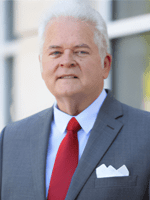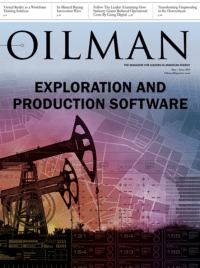Fifty years ago, in 1969, natural gas was found in tremendous commercial volumes at the GHK Company #1 Green well, completed at a depth of 24,147 feet in the Anadarko Basin. This is approximately a mile southeast of Elk City, Oklahoma, my hometown. In those fifty years, thanks to the beginning of exploration in the Anadarko Basin, natural gas has become a much needed fuel for power generation and transportation. The total depth was 24,454 feet. GHK began drilling the well in 1967.
As described in the book entitled The Grand Energy Transition, “the #1 Green broke virtually every technological record of its time. It was by far the highest-pressure well ever drilled in the world, the second deepest. Cameron Iron Works specially built the largest and highest-pressured gas wellhead ever constructed to contain the highest pressured gas well in the world (15,130 pounds per square inch at the surface). Because we had encountered such a high world record pressure, there was no pressure gauge in the world to measure it. Luckily, one of our partner companies, Amerada, had a research and development facility in Tulsa that worked with high pressure gas. It constructed the first-ever 20,000-psi gauge” – “The #1 Green well became the first well to establish the prolific gas-producing capability of the Deep Anadarko Basin, thereby opening the province to billions of dollars of subsequent deep gas development.”
Six years later, 1975, after the #1 Green well discovery, I first recognized what a strong force OPEC was while working for then U.S. Senator Dewey F. Bartlett. Senator Bartlett had asked several of his staff members including myself to review remarks he was going to make in Norway before OPEC officials. Only a year before, the energy industry had been deeply impacted by the 1973-74 oil embargo. It was obvious that the energy industry and our nation’s petroleum security would be dealing with major issues during my lifetime.
Because of my interest in energy development, two years later, in 1977, I began working as a petroleum landman in the Anadarko Basin, purchasing oil and gas leases in locations where some of the deepest natural gas wells were drilled. Natural gas and all forms of energy was necessary then and will definitely be necessary in the future.
A strong natural gas industry means more jobs, and a more secure economy. It is extremely important that the U.S. be in a strong position of securing energy reserves within its own boundaries.
National Energy Talk (NET) – National Energy Talk, an Energy Advocate Initiative, was launched July 31st, 2017 in Elk City, Oklahoma and meetings have been held in Tulsa, Edmond and Oklahoma City along with presentations in Houston, Denver and other cities. In 2019, NET will continue its efforts as a platform engaging a national energy dialogue. Go to Facebook: National Energy Talk to support/learn more about NET.
Mark A. Stansberry, energy advisor and corporate development strategist, has been a columnist and contributor for Energies Media since 2014. He is the author of America Needs America’s Energy: Creating Together the People’s Energy Plan and the host of the National Energy Talk podcast. Stansberry served as U.S. Senator Bartlett’s intern/staff member from 1975-76, and led Senators Bellmon and Bartlett’s State Youth Conference in 1976. Stansberry can be contacted through his website.










